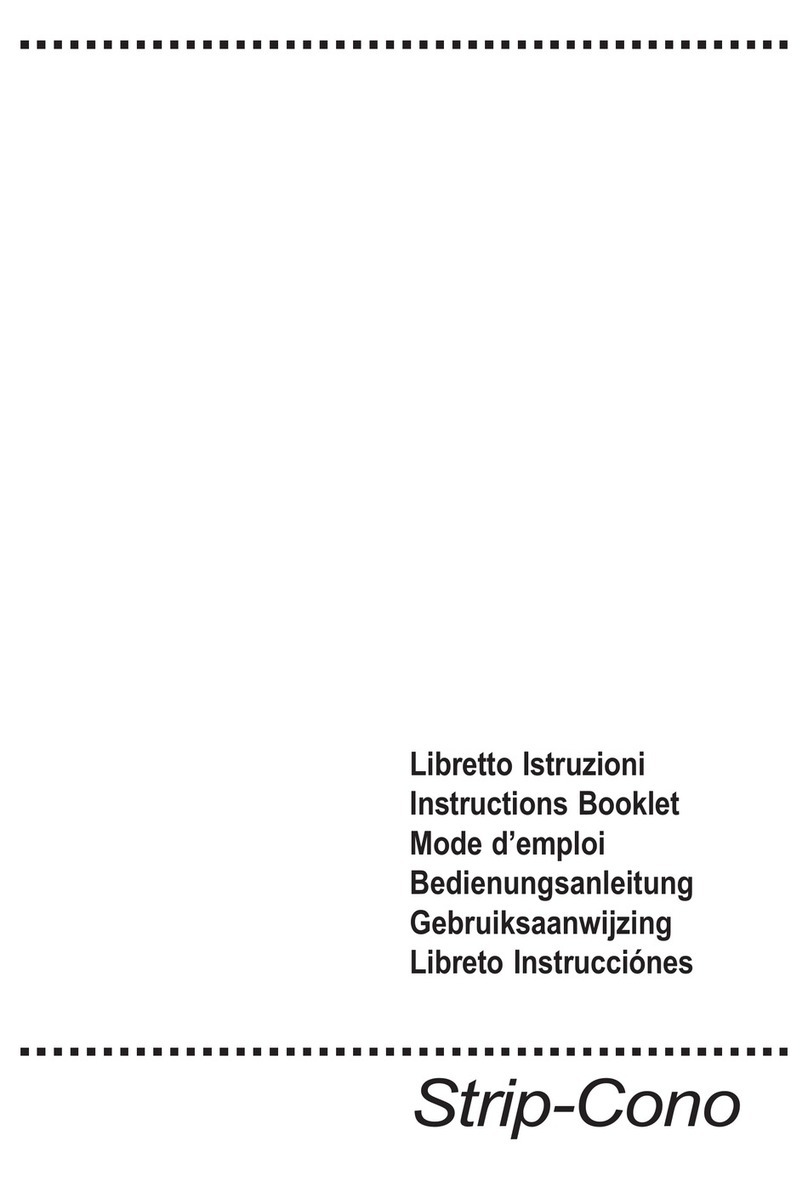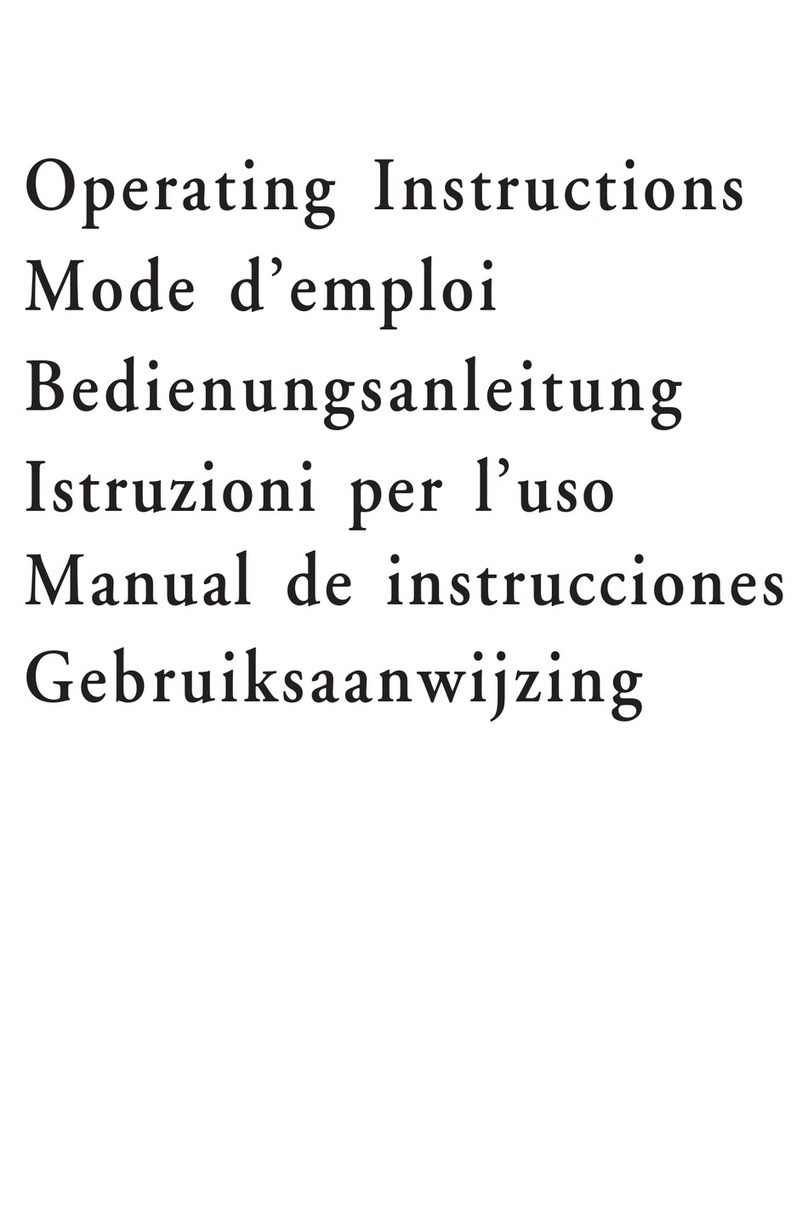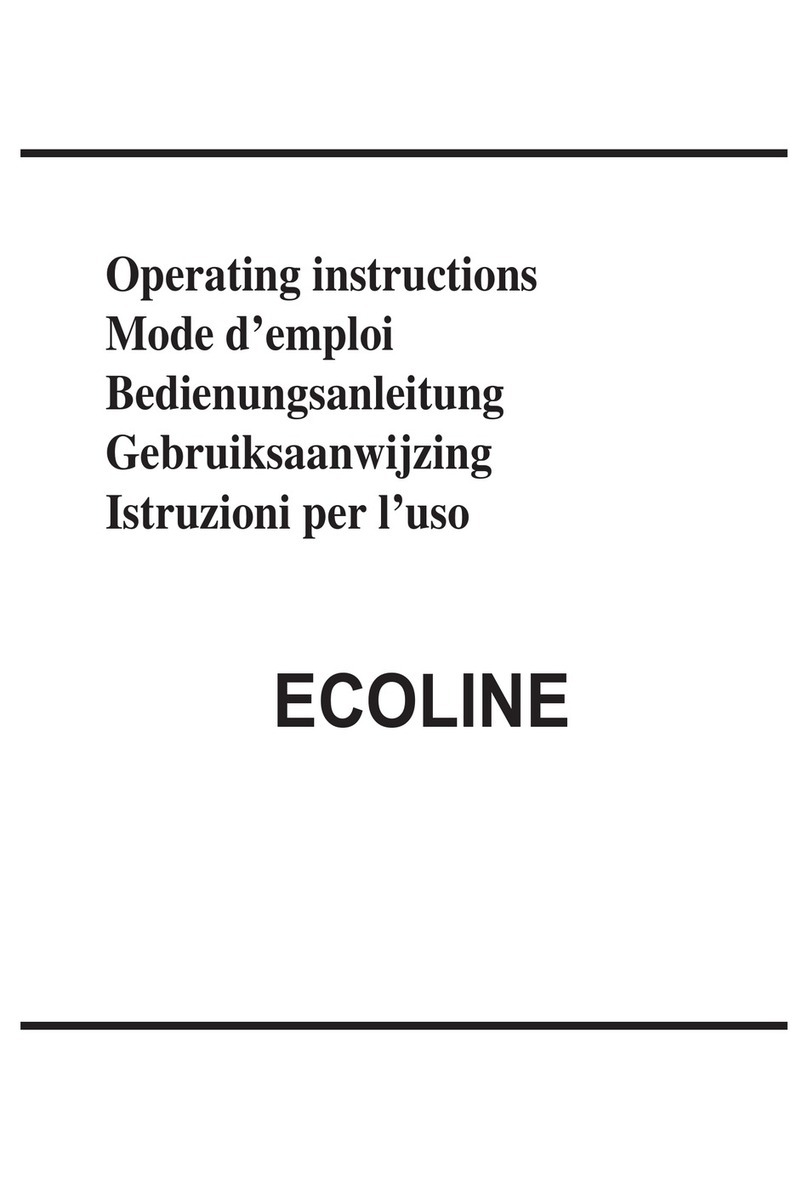8
○○○○○○○○○○○○○○○○○○○○○○○○○○○○○○○○○○○○○○○
○○○○○○○○○○○○○○○○○○○○○○○○○○○○○○○○○○○○○○○○○○○○○○○
GB
○○○○○○○○○○○○○○○○○○○○○○○○○○○○○○○○○○○○○○○○○○○○○○○
INS ALLA ION
The cooker hood must be installed centrally over a cooking appliance. The minimum
distance between the cooking surface and the metal grease filters on the underside of
the hood must be at least 650mm. To install the hood proceed as follows: -
1 - Firstly, draw a vertical line approximately 950mm up the wall from the centre of the cooking
appliance. Secondly, draw two vertical lines 90mm either side of the first line up to the
ceiling. Thirdly, draw four horizontal lines through the vertical lines at Y-J-X2-X1 as
illustrated in fig. 1 to give you your drilling positions.
2 - Drill eight 8mm diameter holes at X1-X2-J-Y and insert the plastic rawl plugs supplied as
illustrated in fig. 2 ensuring the brackets are fitted as shown in the blow up.
3 - Secure the two brackets C to the wall inserting two of the screws supplied through the
two holes on line X1-X2 as illustrated in fig. 2.
4 - Secure the locking washer D to the wall inserting one of the screws supplied through
hole Y as illustrated in fig. 2 ensuring the washer is fitted with the recess to the wall
as shown in the blow up.
5 - Slide the canopy down the wall to locate the key hole over the washer then secure the
canopy to the wall by inserting two of the screws supplied through the two outer holes in
the rim of the canopy J1 and J2 as illustrated in fig. 3.
o prevent the canopy from accidentally being dislodged from the wall at anytime
fit the final screw supplied through hole J3.
6 - Fit the ducting flange E over the rectangular air outlet in the top of the canopy rim using
the two 2.9mm self tapping screws provided as illustrated in fig. 4.
7- EX RAC ION OR RECIRCULA ION INS ALLA ION:
7A EX RAC ION (Ducted)
- When used in the extraction(ducted) mode contaminated air enters the cooker hood
through the metal grease filters and passes out through ducting to the outside.
- When the hood is ducted to the outside the 150 to 120mm diameter ducting spigot G
must be fitted onto the ducting flange E as illustrated in fig. 5.
-The (optional) ducting required must be 120mm in diameter and made from fire retardent
material. Where flexible ducting is fitted it should not be turned through very tight bends
as this could impair the performance of the hood.
- IMPOR AN : he ducting used inside the chimney must not be larger than 120mm
in diameter as this could subsequently prevent the chimney fitting correctly.
- he ducting system for this appliance must not be connected to any ventilation
system which is being used for any other purpose.
7B RECIRCULA ION (Filtered)
- When used in the recirculation mode (filtered) contaminated air enters the cooker hoDD
through the metal grease filters, passes through the (optional) cleansing charcoal filters
where it is purified and passes out into the kitchen through the grilles in the chimney.
- When the hood is fitted in the recirculation mode the air deflector H should be fitted as
illustrated in fig. 6.
- Fit the (optional) charcoal filters by repeating the following operation on each side of the
motor housing. Place the two key hole slots in the filter L over the tabs on the motor
housing M and turn the filter clockwise to lock the filter in position as illustrated in fig. 7.






























